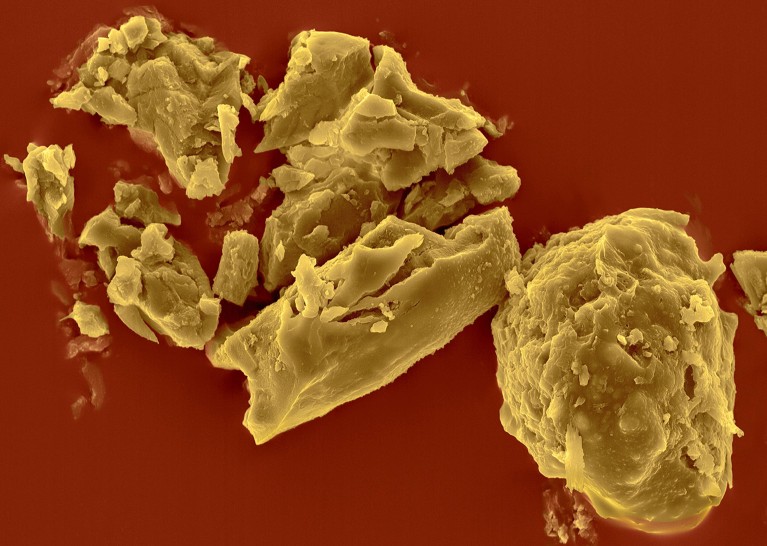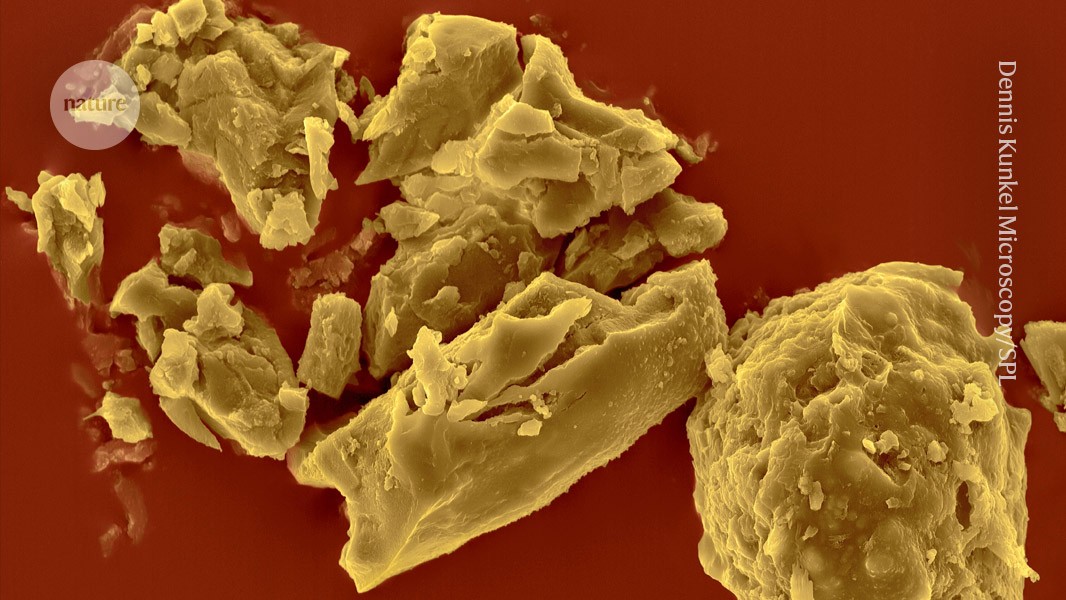
Organic molecules, which contain carbon (pictured), form certain shapes because of how their atoms bond.Credit: Dennis Kunkel Microscopy/Science Photo Library
For the first time, chemists have made a class of molecules previously thought too unstable to exist, and used them to generate exotic compounds1. Scientists say these notorious molecules, known as anti-Bredt olefins (ABOs), offer a new path to synthesizing challenging drug candidates.
The work is “a landmark contribution”, says Craig Williams, a chemist at the University of Queensland in Brisbane, Australia. The findings are published in Science.
Organic molecules, which contain carbon, typically conform to specific shapes because of the way their atoms bond together. For instance, olefins, also called alkenes — hydrocarbons that are often used in reactions for drug development — have one or more double bonds between two carbon atoms, resulting in the atoms being arranged in one plane.
The 100-year-old Bredt’s rule — which was proposed in 1924 by organic chemist Julius Bredt — states that, in small molecules made up of two rings that share atoms, such as some types of alkene, double bonds between two carbon atoms cannot occur where the rings join together, called the bridgehead position. This is because the bonds would force the molecule into a tortured, strained 3-D shape that makes it highly reactive and unstable, says study co-author Neil Garg, a chemist at the University of California, Los Angeles. “Still, 100 years later, people would say these types of structures are forbidden or too unstable to make,” he says.
Although the rule has made its way into chemistry textbooks, it hasn’t stopped researchers from trying to break it. Previous research has hinted that it’s possible to create ABOs that have a double carbon–carbon bond at the bridgehead position2. But attempts to synthesize them in their complete form were unsuccessful because the reaction conditions were too harsh, says Garg.
Trapping agents
In the latest attempt, Garg and his colleagues treated a precursor compound with a fluoride source to kick-start a milder ‘elimination’ reaction, which removes groups of atoms from molecules. This resulted in a molecule that had the telltale ABO double-carbon bond. When the researchers added various trapping agents — chemicals that capture unstable molecules as they react — to this 3D ABO, they were able to produce several complex compounds that could be isolated. This suggests that the reactions of ABOs with different trapping agents can be leveraged to synthesize 3D molecules, which are useful for designing new drugs, says Garg.
Unlike typical alkenes, ABOs are chiral compounds — molecules that don’t perfectly match up with their mirror image. Garg and his colleagues synthesised and trapped an ABO that was enantioenriched, which means they produced more of one mirroring pair than the other. This finding suggests that ABOs could be used as unconventional building blocks for enantioenriched compounds, which are widely used in pharmaceuticals.
Chuang-Chuang Li, a chemist at the Southern University of Science and Technology in Shenzhen, China, says that the approach could be used to explore innovative synthesis pathways for other challenging molecules, such as the chemotherapy drug paclitexal (sold as Taxol) — a complex, multi-ringed molecule that is difficult to create in the laboratory. “It’s a valuable and reliable method,” says Li.
Garg and his team are exploring other reactions involving ABOs, and are investigating how to synthesize other molecules with seemingly impossible structures. “We can be thinking a little bit more outside of the box,” he says.


